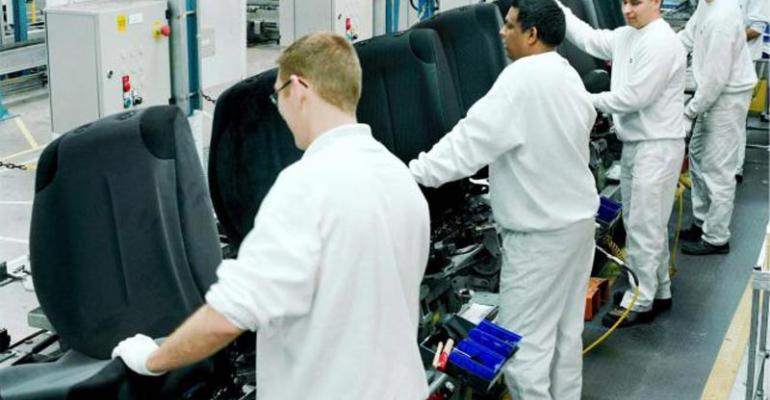A deal to help facilitate European sales of car parts to Russia is set to bolster the assault by the continent’s automotive industry on one of its biggest export-market targets.
The agreement between the 27 member countries of the European Union and Russia is part of the overall global deal allowing that country to join the World Trade Organization. It is designed to help protect EU parts makers against a Moscow investment program that gives foreign auto makers incentives to relocate to Russia.
The investment program has raised concerns that it could encourage Russia-based manufacturers, both domestic and foreign-owned, to avoid using imports to source foreign car components.
The main provision of the deal is establishment of a compensation system providing that if EU auto-parts exports fell by 3% in any one year, Russia would allow the import of such parts at reduced customs duties.
European auto-parts makers have warmed to the deal. Jean Marc Gales, CEO of the European Association of Automotive Suppliers (CLEPA), says the group “generally welcomes the agreement” which, he says, “provides a safeguard on healthy trade flows from (the) EU to Russia (and) secures the retention of EU employment and expertise.”
CLEPA represents 84 global suppliers of car parts, systems and modules. Both Brussels-based ACEA, the European auto makers’ association, and the London-based Society of Motor Manufacturers and Traders indicate support for CLEPA’s stance.
Garel Rhys, a professor and president of the Centre for Automotive Industry Research at Cardiff University Business School, says European companies are well-positioned to exploit any post-WTO expansion of Russian vehicle assembly.
Rhys notes that some 60% of the value of auto-industry production is in parts rather than actual vehicle manufacture. “On their doorstep they (EU parts makers) will have the burgeoning industry in Russia, which, by 2020 if economic conditions keep growing as they have been, will displace Germany as the single biggest European market.”
Vehicle production in Russia has been surrounded by a number of problems, and direct investment in new manufacturing facilities by European firms “hasn’t been massive” but is changing, Rhys says.
Russia, he says, “will become the new China in a way, in terms of the growth of vehicle production, and the developments in Russia are going to be much clearer and much nearer to the west European market. Once you start making cars in Russia which are fully up to speed in every way, Russia will become an increasingly important source of vehicles for the West European consumer.”
Russian auto makers’ purchases of the same components as manufacturers of cars assembled in Western Europe, would be a “very, very significant development” for EU parts producers, Rhys says.
Even the Russian auto sector is conditionally supporting the parts deal, says Igor Korovkin, executive director of the Association of Russian Automakers (OAR).
He notes Russian cars already conform to European technical standards, and they will only improve as more foreign cars enter the domestic market. “Competition will improve the product.”
But Korovkin agrees there is a serious risk that Russian parts manufacturers could lose out. Lower tariffs often would make it more profitable for assemblers to import car parts than to produce them in Russia, he warns.
OAR officials met recently with metallurgy specialists, who design and work with alloys for car parts, to discuss the potential impact of the agreement and ways to protect their business against increased EU competition.
One tactic is a bill under review in the Russian parliament and likely to be adopted in the fall. It would provide more state support for Russian and foreign manufacturers located in Russia until 2018 and fund compensation to auto-parts producers that lose money once they are not protected by higher duties.
However, Korovkin says it is too early to tell how Russia’s car-parts manufacturing industry will change. He predicts the sector should remain stable for the next two years, and its long-term health probably will depend on the fitness of the country’s overall economy.
“It all depends on how the market will grow,” Korovkin says. “If it continues to grow at the current rate, then manufacturing car parts will stay profitable. If it falls, then it won’t.”
– with Khristina Narizhnaya in Moscow





